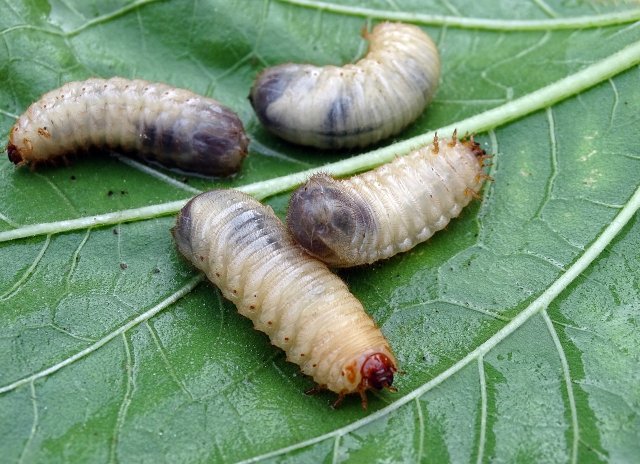
The mole cricket is nocturnal and lives underground – that’s why amateur gardeners rarely get to see it. One problem is the animal’s underground tunnels. Here you can find out how to recognize the mole cricket and how to combat it gently.
The mole cricket doesn’t really deserve its status as a pest. For example, it is not true that the insects feed a lot on plant roots. Similar to the mole, the cricket eats mainly worms, snail eggs and other soil organisms. Only when there is an acute shortage of food does it go after roots. However, the burrows of the mole cricket can become a problem for tender young plants.
Contents
Mole cricket: How to recognize them

The mole cricket is also known as “Werre” and belongs to the grasshopper family. It especially likes to live in compost piles and vegetable beds because it prefers loose soil. It spends most of its life under the surface of the earth. From time to time the mole cricket dares to go outside. Then you can recognize them by the following characteristics:
- about ten centimeters in size
- yellow-brown, plump and slightly hairy body
- large front feet, which it uses for digging
- loud chirping, reminiscent of crickets, during the mating season from May to June
The mole cricket uses its shovel-like front feet to dig long tunnel systems. The tunnels are usually about five centimeters wide and run just below the earth’s surface. As a result, the insects often push seedlings out of the ground and damage the roots of young plants as they dig their tunnels.
This is how infestation by the mole cricket becomes noticeable
Since mole crickets are nocturnal, you will rarely see them. However, you can tell if there are mole crickets living in your vegetable patch by a few clues:
- Ransacked vegetable and herb beds: freshly planted beds are especially attractive to mole crickets. When it digs its tunnel systems, it often uproots the entire soil, pushing seedlings out of the ground.
- Wilting plants: Plant damage can be caused by other insects as well. However, the mole cricket often injures roots while digging, causing plant parts to die as well.
- Bare patches in the lawn: Tennis ball-sized dead patches in your lawn also indicate that you have mole crickets in your yard. The animals have dug their breeding burrows under the patches. In the process, they sever all the roots, which eventually causes the grass to start wilting.
Vegetable plants usually suffer the most from mole crickets. But ornamental plants can also be damaged by the tunnel systems.
Fighting mole cricket with natural means

The mole cricket is rarely found in the wild and is therefore already on the Red List of endangered species. Therefore, you should always carefully consider whether it is really necessary to fight the insect. If you have only light damage to record, you should leave the mole cricket alone.
If the mole cricket is causing a lot of damage to your plants, you should use natural pesticides and not products with harmful ingredients. These kill other beneficial insects and harm the environment. You can gently control mole crickets with the following methods:
- Encourage natural enemies: The most natural way you can control the mole cricket population is by supporting its predators. These include hedgehogs, shrews, moles and some birds such as blackbirds. With a natural garden, you can provide optimal living conditions for these animals and prevent the mole cricket from spreading too far.
- Live traps: To catch the mole cricket alive, all you need are some canning jars and a wooden board. Dig the jars without lids into the lawn or vegetable patch at ground level so that the rim of the jar is flush with the ground. Now place a thin wooden board on the center of the jar openings. Support the board from both sides with heavy stones or wooden blocks so that it does not fall over. At night, the mole cricket prefers to move along an elongated obstacle. The wooden board directs the animals directly into the pitfall. In the morning, you can collect the insects from the jars and release them into the wild.
- Nematodes: You can buy parasitic nematodes at specialty stores. Nematodes are microscopic nematodes that feed mainly on adult mole crickets. In June or July, you can simply mix the parasites into the irrigation water and water the infested beds with them. After the nematodes have eaten the pests, their quantity decreases more and more until only small groups remain in the soil. However, these pose no threat to your plants or beneficial insects like earthworms, as they feed almost exclusively on harmful insects.
Mole cricket: pest or beneficial insect?

Even though mole crickets stir up the ground a lot through their tunnel systems, the animals can be very useful. For example, they feed on pests such as the wireworm, grubs, slugs and their eggs. These animals pose an even greater threat to your plants than the mole cricket itself. By coming to terms with the mole cricket, you can benefit from sparing your garden from worse pests.

